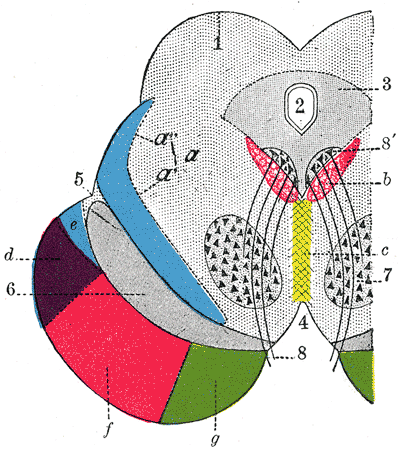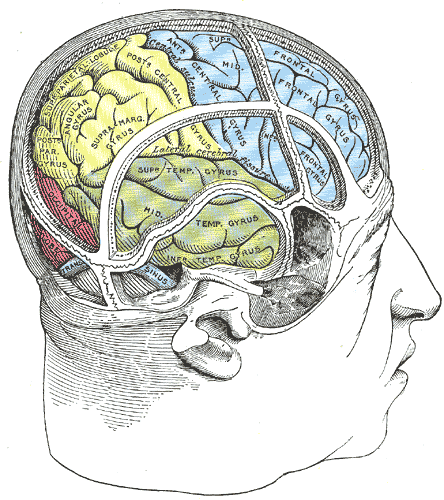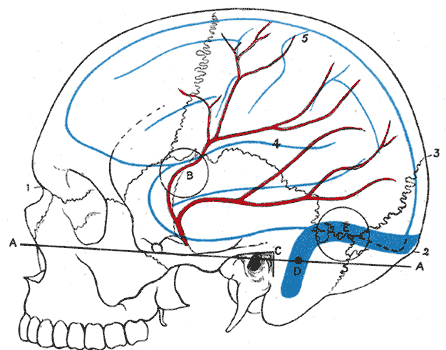Lateral sulcus
Overview
The lateral sulcus (also called Sylvian fissure or lateral fissure) is one of the most prominent structures of the human brain. It divides the frontal lobe and parietal lobe above from the temporal lobe below. It is in both hemispheres of the brain but is longer in the left hemisphere. The lateral sulcus is one the earliest-developing sulci of the human brain. It first appears around the fourteenth gestational week.[1]
The lateral sulcus has a number of side branches. Two of the most prominent and most regularly found are the ascending (also called vertical) ramus and the horizontal ramus of the lateral fissure, which subdivide the inferior frontal gyrus. The lateral sulcus also contains the transverse temporal gyri, which is part of the primary localized auditory cortex.
It was named the sylvian fissure after Franciscus Sylvius (1614-1672), professor of medicine at Leiden.
References
- ↑ Jee G. Chi, Elizabeth C. Dooling, Floyd H. Gilles (1977). "Gyral development of the human brain". Annals of Neurology. 1 (1): 86–93. doi:10.1002/ana.410010109. Unknown parameter
|month=ignored (help)
Additional images
-
Coronal section through mid-brain.
-
Posterior and inferior cornua of left lateral ventricle exposed from the side.
-
Drawing to illustrate the relations of the brain to the skull.
-
Relations of the brain and middle meningeal artery to the surface of the skull.
References
Template:Prosencephalon nl:Fissura lateralis Template:WH Template:WS



